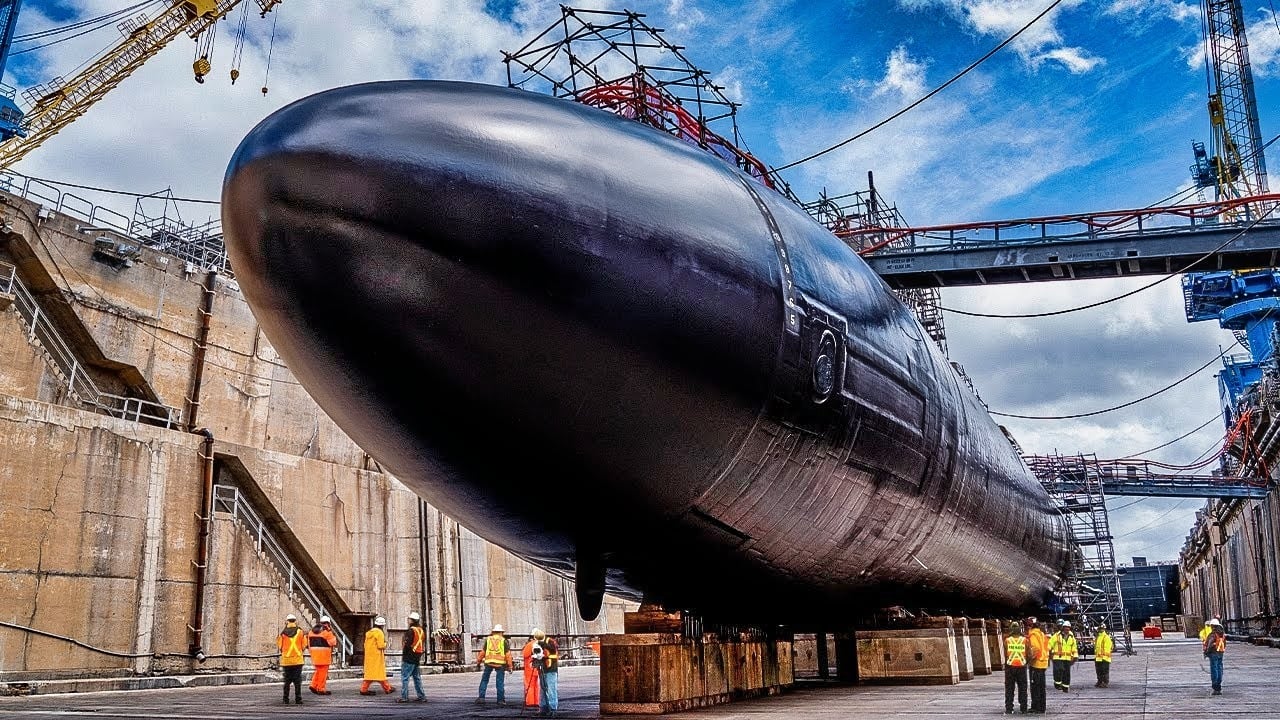'Manhole Open': How a New U.S. Navy Nuclear Submarine Sank While Docked
In 1969, the USS Guitarro, a nuclear-powered attack submarine under construction, sank at Mare Island Naval Shipyard due to flooding in the forward sonar dome. A Navy investigation blamed shipyard employees for negligence, as both the sonar dome’s manhole cover and a protective cofferdam had been removed during repairs, allowing water to flood the submarine.
What You Need to Know About This Submarine Disaster: In 1969, the USS Guitarro, a nuclear-powered attack submarine under construction, sank at Mare Island Naval Shipyard due to flooding in the forward sonar dome. A Navy investigation blamed shipyard employees for negligence, as both the sonar dome’s manhole cover and a protective cofferdam had been removed during repairs, allowing water to flood the submarine.

-The incident caused damages estimated at $97 to $139 million in today's dollars and delayed the submarine's commissioning by nearly three years.
-Guitarro was refloated three days later, earned the nickname "Mare Island Mud Puppy," and served until decommissioned in 1992.
How the USS Guitarro Sank During Construction in a Costly Shipyard Mishap
In 1969, the U.S. Navy lost a nuclear-powered attack submarine, the USS Guitarro, while she was still under construction. The Guitarro, which had been under construction for nearly four years, and was due to be commissioned the following year, had been docked at Mare Island in the San Francisco Bay Naval Shipyard when she sank. Flooding in the forward part of the Guitarro caused the sinking, which resulted in between $15.2 and $21.85 million dollars worth of damage, $97 to $139 million accounting for inflation.
According to a subsequent investigation, “the sinking of the USS Guitarro was accidental.” However, the immediate cause of the sinking was the culpable negligence of certain shipyard employees,” and a contributing factor was, “inadequate coordination of both the ship construction activities and the assignment of specific responsibilities.”
So, the multi-million dollar loss was avoidable.
A Learning Experience: The Submarine Goes Down
In the autopsy of the sinking, the Navy found the Guitarro to have an “Achilles heel.” At the nose of the ship, the Guitarro featured a bow structure sonar dome. To enter the sonar dome, crewmembers passed through a manhole that had a bolted cover. Additionally, a cofferdam measuring three-and-a-half feet high was used to protect the sonar dome from water. Both the manhole cover and the cofferdam were used to protect the sonar dome and prevent water from entering the compartment.

However, during the repair of faulty electronic gear, both the manhole cover and the cofferdam were removed. Then, with both the manhole cover and cofferdam removed, the Guitarro was subjected to a trimming operation and calibration test, which caused a change in the vessel’s draft. The change in draft allowed for water to enter into the exposed sonar dome. The entrance of water into the most forward part of the ship further affected the draft, which in turn allowed more water to enter the sonar dome, “this soon allowed massive flooding through the large bow access, and at this point, the Guitarro was doomed.”
The Navy investigation determined that those overseeing the construction of the Guitarro had, “a responsibility for protecting it from the threat posed by the open sonar dome manhole.” According to the Ship Superintendent, “the bolted manhole cover should not have remained off without a cofferdam around the hole.” Indeed, “a cofferdam could have been installed quickly and easily, but the general foreman testified that, although he recognized the open manhole as a potential threat to the safety of the ship, he felt a sufficiently close watch of it was being maintained and therefore, there was [no] need for a cofferdam. Unfortunately, no one was watching the night the Guitarro sank.”
The Guitarro was refloated, fortunately, three days later. Yet the sinking caused a nearly three-year delay in commissioning. Finally, in 1972, the Guitarro was commissioned, with the nickname Mare Island Mud Puppy; she served for two decades, until 1992, when she was decommissioned and eventually scrapped.
About the Author: Harrison Kass
Harrison Kass is a defense and national security writer with over 1,000 total pieces on issues involving global affairs. An attorney, pilot, guitarist, and minor pro hockey player, Harrison joined the US Air Force as a Pilot Trainee but was medically discharged. Harrison holds a BA from Lake Forest College, a JD from the University of Oregon, and an MA from New York University. Harrison listens to Dokken.
Image Credit: Creative Commons and/or Shutterstock. Images are of generic U.S. Navy nuclear submarines.


